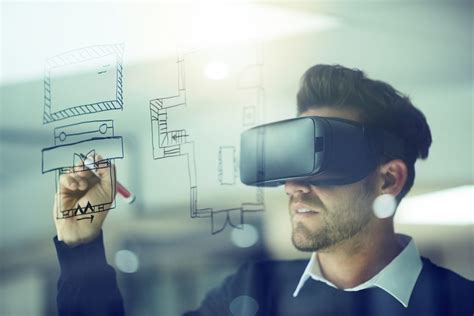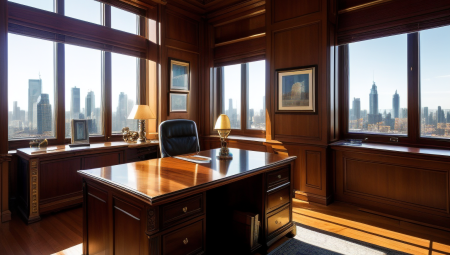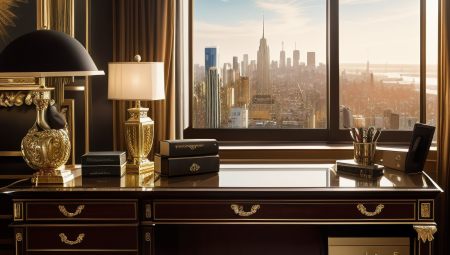Virtual Reality (VR) has revolutionized the way we experience digital content, offering an immersive and interactive environment that bridges the gap between the virtual and physical worlds. Designing virtual realities is a complex and exciting journey that requires a deep understanding of the technology, user behavior, and design principles. In this blog post, we will embark on a comprehensive exploration of VR design, delving into the basics of virtual reality, the importance of user experience, immersive graphics and visual design, intuitive user interfaces, sound design, navigation and movement, interactive interactions, balancing realism and performance, addressing motion sickness, and the crucial process of testing, iterating, and refining VR designs for optimal user engagement. Whether you are a seasoned VR designer or a newcomer to the field, this blog post will provide valuable insights and best practices for creating compelling and unforgettable virtual reality experiences.
Table of Contents
Understanding the Basics of Virtual Reality
Virtual Reality (VR) technology is an immersive experience that allows users to interact with a computer-generated environment in a realistic way. It is achieved through the use of a head-mounted display and motion tracking sensors, providing users with a 3D simulation of the virtual environment.
One of the key components of VR is the use of stereoscopic displays, which create the illusion of depth by displaying two slightly different angles of the same image to each eye. This creates a sense of depth and immersion, making the virtual environment feel more realistic to the user.
Another important aspect of VR is spatial sound, which creates a realistic auditory experience that matches the virtual environment. This can be achieved through the use of directional audio and binaural recording techniques. By incorporating sound design into VR experiences, designers can create an even more immersive and realistic environment for the user.
Overall, understanding the basics of virtual reality involves grasping the technology and techniques used to create an immersive and realistic experience for the user. By mastering these fundamentals, designers can create compelling and engaging virtual reality experiences that captivate and delight users.
The Importance of User Experience in VR Design
Virtual reality (VR) is a rapidly growing field that has the potential to revolutionize the way we interact with technology. As the technology continues to evolve, it is becoming increasingly important to prioritize user experience in VR design. The user experience in VR design is crucial because it directly impacts how users perceive and interact with virtual environments. This in turn affects the overall effectiveness and success of VR applications and experiences.
One of the key reasons why user experience is so important in VR design is because the technology is inherently immersive and interactive. Unlike traditional 2D interfaces, VR places users at the center of the experience, creating a sense of presence and embodiment. This means that every design decision, from visual elements to user interactions, can greatly influence how users perceive and engage with the virtual environment.
In addition, the user experience in VR design directly impacts user comfort and safety. Poor design choices can lead to issues such as motion sickness or disorientation, which can significantly detract from the overall experience. By prioritizing user experience, designers can create VR environments that are intuitive, comfortable, and easy to navigate, allowing for more enjoyable and engaging experiences for users.
Ultimately, the importance of user experience in VR design cannot be overstated. As the technology continues to advance and VR experiences become more prevalent in various industries, it is critical for designers to prioritize user experience to ensure the success and widespread adoption of VR technologies.
Exploring Immersive Graphics and Visual Design in VR
When it comes to virtual reality (VR), one of the key elements that truly immerse users in the experience is the graphics and visual design. The way in which the environment, objects, and characters are rendered can make or break the sense of immersion in VR.
Immersive graphics in VR involve creating environments and objects that not only look realistic, but also behave realistically. This means paying attention to details such as lighting, shadows, textures, and animations to create a convincing and engaging virtual world.
Visual design in VR goes beyond just creating realistic graphics. It also involves creating a cohesive and aesthetically pleasing world that draws users in and keeps them engaged. This can include factors such as color theory, composition, and overall art direction to create a visually stunning and captivating experience.
Ultimately, immersive graphics and visual design are crucial elements in creating a truly compelling VR experience. By paying attention to every detail and creating a world that looks and feels convincing, designers can transport users to new and exciting virtual worlds.
Designing Intuitive and Interactive User Interfaces for VR
When it comes to designing intuitive and interactive user interfaces for VR, there are several important factors to consider. One of the key aspects is creating a user-friendly experience that allows for seamless interaction within the virtual environment. This involves designing interfaces that are easy to understand and navigate, as well as providing users with the ability to interact with the virtual world in a natural and intuitive manner.
Another important consideration when designing user interfaces for VR is the need to incorporate interactive elements that engage users and enhance their overall experience. This can include features such as gesture-based controls, haptic feedback, and responsive interfaces that adapt to user input. The goal is to create a sense of presence and immersion within the virtual environment, allowing users to feel as though they are truly interacting with the world around them.
In addition to creating intuitive and interactive user interfaces, VR designers must also consider the importance of accessibility. This involves designing interfaces that are inclusive and can be easily used by individuals with varying levels of experience and ability. By making VR interfaces accessible to a broad range of users, designers can ensure that their experiences are enjoyed by as many people as possible.
Overall, designing intuitive and interactive user interfaces for VR is a crucial aspect of creating compelling and immersive virtual reality experiences. By prioritizing user-friendly design, interactive elements, and accessibility, VR designers can create interfaces that enhance user engagement and provide a truly immersive experience.
The Role of Sound Design in Creating Realistic VR Environments
When it comes to creating truly immersive virtual reality experiences, sound design plays a critical role in bringing environments to life. In the world of VR, sound is not just an afterthought, but an essential component that directly impacts the overall user experience. The ability to accurately replicate and simulate realistic soundscapes can significantly enhance the sense of presence and immersion for users, making it an integral part of the VR design process.
One of the key aspects of sound design in VR is spatial audio, which allows for the placement and movement of sounds within a three-dimensional space. This means that users can perceive sound as coming from specific directions or distances, creating a more realistic and dynamic auditory experience. By incorporating spatial audio technology, VR designers can further blur the line between virtual and physical reality, making the virtual environments feel truly lifelike.
In addition to spatial audio, sound design in VR also involves the creation of interactive and responsive audio cues that correspond to users’ actions and the virtual environment’s changes. Whether it’s the sound of footsteps echoing in an empty hallway or the realistic reverberation of a gunshot in an open field, these auditory elements help to ground users in the virtual world and contribute to a greater sense of presence and engagement.
Furthermore, the psychological impact of sound in VR should not be underestimated. A carefully crafted sound design can evoke emotions, heighten tension, and guide users’ attention within the virtual environment. By leveraging the power of sound, VR designers can create more compelling and immersive experiences that resonate with users on a deep, emotional level, enhancing the overall impact of the VR environment.
Navigation and Movement in Virtual Reality: Best Practices
When it comes to navigating and moving within virtual reality (VR) environments, there are several best practices that designers and developers should keep in mind to ensure a seamless and comfortable user experience.
One of the most important aspects of navigation in VR is providing users with intuitive and easy-to-use controls. This includes implementing natural and familiar movements, such as walking or pointing, to interact with the virtual world. Additionally, it is essential to design interfaces that are easy to understand and operate, in order to minimize confusion and frustration for the user.
Another best practice for navigation and movement in VR is to consider the physical limitations and comfort of the user. This involves designing movement mechanics that are comfortable and do not cause motion sickness or discomfort. For example, implementing teleportation or smooth locomotion options can give users the ability to choose their preferred method of movement, based on their comfort level.
Ultimately, the goal of following best practices for navigation and movement in VR is to create an immersive and enjoyable experience for the user. By prioritizing intuitive controls, comfortable movement options, and user-friendly interfaces, designers and developers can enhance the overall quality of VR experiences and ensure optimal user engagement.
Designing Engaging and Interactive VR Interactions
When it comes to designing engaging and interactive VR interactions, there are a few key principles to keep in mind. First, it’s important to consider the user’s experience and how they will interact with the virtual environment. This means designing intuitive and natural interactions that allow users to seamlessly navigate through the virtual world.
Another important aspect is the use of immersive graphics and visual design to create a visually stimulating environment. The use of high-quality graphics and attention to detail can greatly enhance the user’s experience and make the virtual world feel more realistic.
In addition, sound design plays a crucial role in creating a realistic VR environment. The use of spatial audio and realistic sound effects can greatly enhance the sense of immersion and make the virtual world feel more alive and dynamic.
Finally, it’s important to test, iterate, and refine VR designs to ensure optimal user engagement. This means gathering feedback from users and making adjustments to the design to improve the overall experience. By following these principles, designers can create engaging and interactive VR interactions that captivate and immerse users in virtual worlds.
Balancing Realism and Performance in VR Design
When it comes to virtual reality (VR) design, one of the biggest challenges is finding the perfect balance between realism and performance. On one hand, users expect VR environments to be as close to real life as possible, with high-quality graphics, immersive sound, and seamless interactions. On the other hand, achieving this level of realism can put a strain on hardware and lead to issues such as lag, motion sickness, and decreased overall performance.
One of the key considerations in balancing realism and performance is understanding the limitations of the hardware. This includes the capabilities of the VR headset, the processing power of the device running the VR experience, and the available memory and storage. By knowing these limitations, designers can make informed decisions about the level of detail and complexity they incorporate into the VR environment.
Another important aspect of balancing realism and performance is optimizing the VR experience for different hardware setups. This means taking into account the varying capabilities of different VR headsets, as well as the specifications of the devices running the VR application. By optimizing for a range of hardware configurations, designers can ensure that their VR experiences are accessible to a wider audience without sacrificing too much in terms of realism.
Ultimately, finding the right balance between realism and performance in VR design requires a deep understanding of both the technical limitations and the user expectations. It’s about creating experiences that are as realistic as possible within the constraints of the hardware, while also ensuring that the performance remains smooth and enjoyable for all users.
Addressing Motion Sickness in Virtual Reality Experiences
Virtual Reality (VR) has become an increasingly popular technology, offering immersive experiences and interactive environments. However, one of the challenges that VR designers and developers face is addressing motion sickness in users. Motion sickness occurs when there is a disconnect between what our eyes perceive and what our body senses, leading to discomfort and nausea. This issue can significantly impact the user experience and hinder the widespread adoption of VR technology.
One approach to addressing motion sickness in VR experiences is to prioritize comfort and seamless movement. This means designing virtual environments and interactions that minimize sudden or erratic movements that can trigger feelings of disorientation and discomfort. Smooth transitions, consistent frame rates, and optimized graphics can contribute to a more comfortable and nausea-free experience for users.
Another important consideration in addressing motion sickness is the implementation of user-centered design principles. By understanding the physiological and psychological factors that contribute to motion sickness, VR designers can create experiences that accommodate the varying sensitivities and tolerance levels of users. This may involve offering customizable settings for movement speed, field of view adjustments, and alternative locomotion methods.
In addition, providing visual and auditory cues that align with the user’s physical movement can help reduce the likelihood of motion sickness. Realistic spatial audio, haptic feedback, and visual markers can enhance the user’s sense of presence and spatial orientation, minimizing the sensory conflicts that lead to discomfort.
Testing, Iterating, and Refining VR Designs for Optimal User Engagement
When it comes to creating virtual reality experiences, the process doesn’t end with the initial design. Testing, iterating, and refining the VR designs are crucial for ensuring optimal user engagement. Through thorough testing and iteration, designers can uncover potential issues and refine their designs to provide a more immersive and satisfying experience for users.
Testing VR designs involves putting them in the hands of real users and observing how they interact with the virtual environment. This can reveal usability issues, areas of confusion, or features that may be causing discomfort. By gathering feedback from users, designers can identify areas for improvement and make the necessary adjustments to enhance the overall user experience.
Iteration is an essential part of the design process, especially in the dynamic world of virtual reality. By continuously refining and improving VR designs based on user feedback and testing results, designers can ensure that their experiences are continuously evolving to meet the needs and preferences of their target audience.
Ultimately, the goal of testing, iterating, and refining VR designs is to create experiences that not only meet but exceed user expectations. By placing an emphasis on user engagement and satisfaction, designers can create VR experiences that are truly immersive, captivating, and enjoyable for users.





